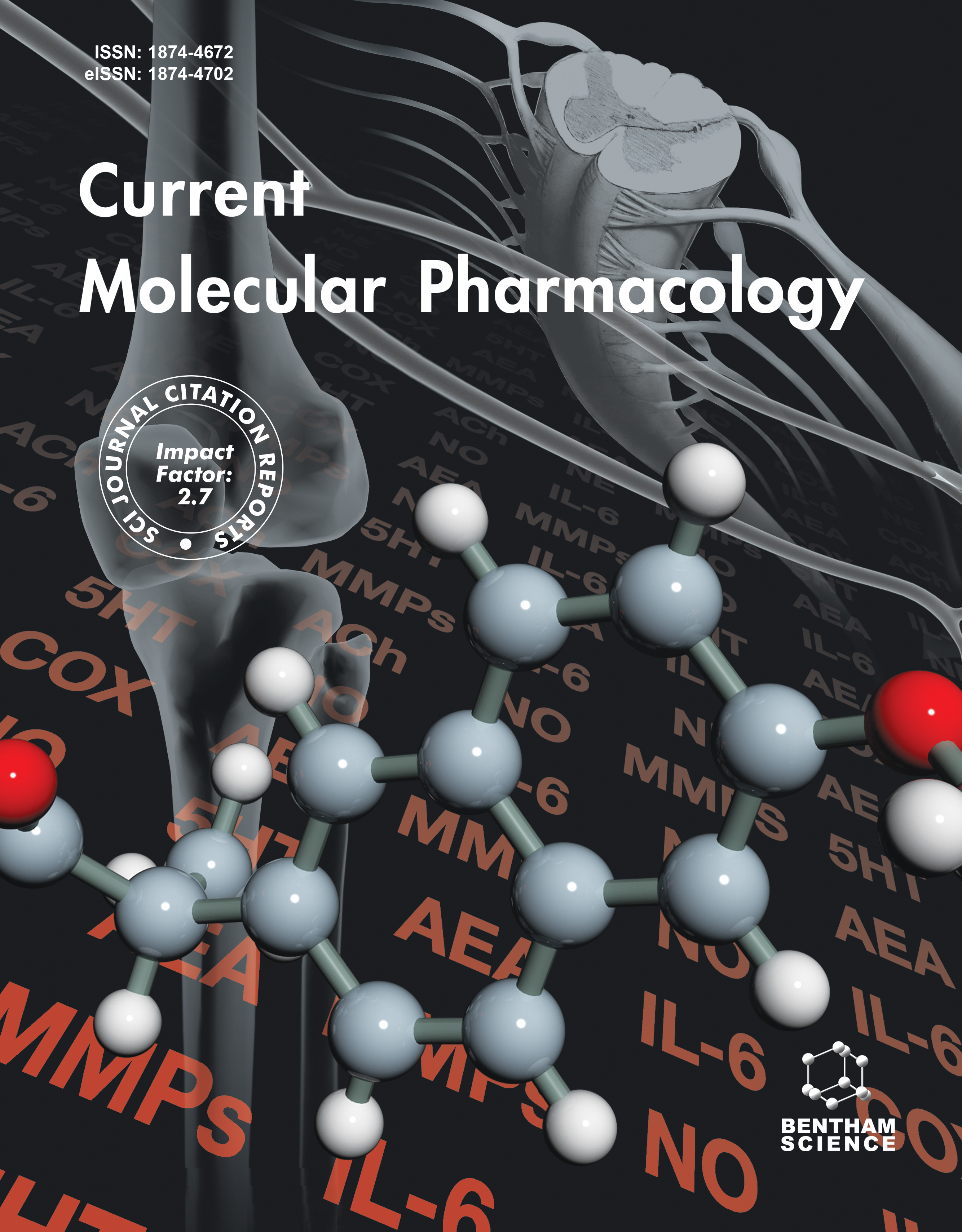- Home
- A-Z Publications
- Current Molecular Pharmacology
- Previous Issues
- Volume 11, Issue 3, 2018
Current Molecular Pharmacology - Volume 11, Issue 3, 2018
Volume 11, Issue 3, 2018
-
-
COX-2 in Radiotherapy: A Potential Target for Radioprotection and Radiosensitization
More LessBackground: Each year, millions of people die from cancer. Radiotherapy is one of the main treatment strategies for cancer patients. Despite the beneficial roles of treatment with radiation, several side effects may threaten normal tissues of patients in the years after treatment. Discussion: Moreover, high incidences of second primary cancers may reduce therapeutic ratio of radiotherapy. The search for appropriate targets Read More
-
-
-
Targeting M3 Muscarinic Receptors for Colon Cancer Therapy
More LessAuthors: Jessica Felton, Shien Hu and Jean-Pierre RaufmanBackground: Expression and activation of subtype-3 muscarinic receptors (M3R) plays an important role in the progression of colorectal neoplasia. Method: Herein, we describe the role of muscarinic receptors in colon cancer, focusing specifically on M3R, illustrate how M3R over-expression and activation of post-receptor signaling pathways potentiates tumor progression, and explore the efficacy and safety of a variety of therap Read More
-
-
-
Protein Tyrosine Phosphatase as Potential Therapeutic Target in various Disorders
More LessAuthors: Shivani Verma and Saurabh SharmaBackground: Tyrosine-protein phosphatase is an enzyme that functions in a unit with tyrosine kinases to regulate signaling pathways. Several members of the PTP family link to human disease predisposition such as PTP1B, SH2, DEP1, and inhibition of these enzymes may represent an effective palliative therapy. Objective: This review aims to summarize the rapidly developing role of the PTPs in various physiological and Read More
-
-
-
Targeting of Inflammation for Radiation Protection and Mitigation
More LessBackground: Inflammation is the response of the immune system that guards the body against several harmful stimuli in normal conditions. However, in response to ionizing radiation that leads to a massive cell death and DNA aberrations, this phenomenon causes various side effects in normal tissues. Inflammation is involved in various side effects such as gastrointestinal toxicity, mucositis, skin reactions, nervous syste Read More
-
-
-
Tandem Mass Spectrometric Cell Wall Proteome Profiling of a Candida albicans hwp2 Mutant Strain
More LessAuthors: Andy Awad, Pamela El Khoury, Brigitte Wex and Roy A. KhalafBackground: Candida albicans is present as part of the normal gut flora and detected in the oral cavities and GI tracts of around fifty percent of adults. Benign colonization can turn pathogenic causing a variety of mild to severe infections. In a pathogen, the cell wall and cell surface proteins are major antigenic determinants and drug targets as they are the primary structures that contact the host. Cell surface proteins perfor Read More
-
-
-
Transdermal Delivery of AT1 Receptor Antagonists Reduce Blood Pressure and Reveal a Vasodilatory Effect on Kidney Blood Vessels
More LessBackground: The Renin Angiotensin System (RAS) is pharmacologically targeted to reduce blood pressure, and patient compliance to oral medications is a clinical issue. The mechanisms of action of angiotensin receptor blockers (ARBs) in reducing blood pressure are not well understood and are purported to be via a reduction of angiotensin II signaling. Objective: We aimed to develop a transdermal delivery m Read More
-
-
-
L-Sulforaphane Confers Protection Against Oxidative Stress in an In Vitro Model of Age-Related Macular Degeneration
More LessAuthors: Nabeela K. Dulull, Daniel A. Dias, Thilini R. Thrimawithana and Faith A.A. KwaBackground: In age-related macular degeneration, oxidative damage and abnormal neovascularization in the retina are caused by the upregulation of vascular endothelium growth factor and reduced expression of Glutathione-S-transferase genes. Current treatments are only palliative. Compounds from cruciferous vegetables (e.g. L-Sulforaphane) have been found to restore normal gene expression levels in diseases inc Read More
-
-
-
Socialization Alleviates Burden of Oxidative-Stress in Hippocampus and Prefrontal Cortex in Morphine Addiction Period in Male Rats
More LessAuthors: Hamidreza Famitafreshi and Morteza KarimianIntroduction: Addiction is a compulsive drug-seeking and drug-taking behavior. Reduction of high-risk behaviors can reduce the burden of addiction in society and can improve the overall prognosis of drug addiction. The aim of this study is to show that reduction of oxidative stress with socialization will reduce occurrence of high-risk behavior during addiction period. Method: Fifty-four male Sprague-Dawley rats were ran Read More
-
Most Read This Month
Article
content/journals/cmp
Journal
10
5
false
en


